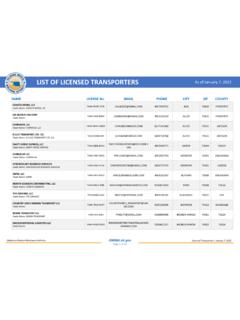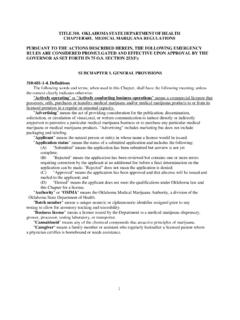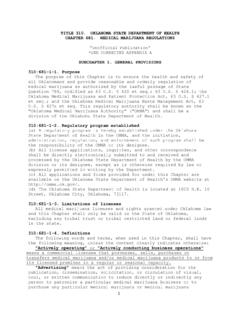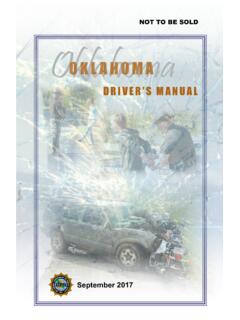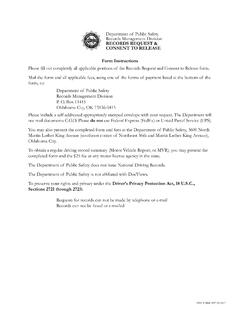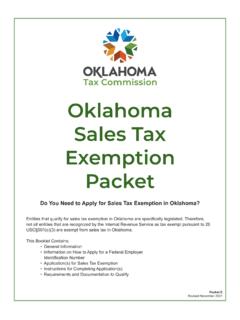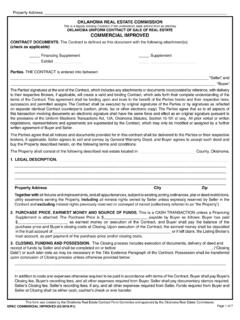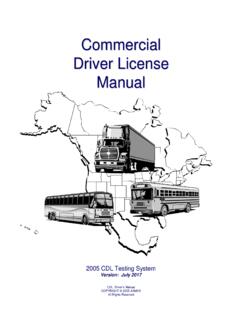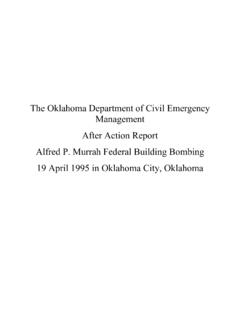Transcription of Addressing the Current Infant Formula Shortage
1 Addressing the Current Infant Formula Shortage What caused this Shortage ? Pandemic- related supply chain issues and a large recall of several formulas, including Similac, in February. The factory responsible for the recall, one of the country's four main producers of baby Formula , remains closed pending an FDA investigation. All of these issues have led to consumer anxiety, resulting in stockpiling, which appears to have intensified Formula shortages. Why can't we just quickly make more? Small number of manufacturers only five approved in the Small number of facilities These facilities must be FDA-registered and pass strict annual inspections to ensure proper protocols to keep infants safe. Supply chain challenges for ingredients Manufacturing time frame It takes 6-8 weeks to produce a batch of Formula and get it onto the shelves of grocery stores. Formula production requires specific ingredients, tools and protocols to ensure no bacterial contamination during manufacturing.
2 We don't want to trade the Current problem (shortages) for a larger, more dangerous problem (infants getting sick from haphazard Formula production).. How can I find Formula during the Shortage ? Check the Formula stock at smaller stores and pharmacies in your area. Check with your baby's pediatrician to see if they have any Formula samples to give. Check social media groups (discretion is advised to avoid scams). Check for store brand Formula options. Check with local food banks, community organizations, or local county DHS offices to see if they have Formula available. If on WIC, contact your local county health department for additional resources Visit this fact sheet from the Department of Health and Human Services for national manufacturer hotlines and community resources. Page 1. What is the government doing to help? As of May 10, the FDA and Biden Administration announced they are working with producers to find ways to boost supply and imports of additional products from abroad.
3 USDA is working with states to make it easier for vulnerable families to purchase the Formula they need with their WIC benefits. As of May 16th, an agreement was reached between Abbott and officials allowing the plant to restart production after FDA verifies the bacterial contamination issue has been resolved. If I can't find my baby's Formula , what can I do? Check if alternate forms of your baby's Formula are available for purchase (examples: powder, concentrate, or ready-to-feed options). Talk to a healthcare provider (like a pediatrician or nutritionist) about how to gradually transition from Current Formula to a new Formula to help your baby tolerate the Formula switch better. Contact a lactation consultant about relactating or increasing your milk supply. Contact the Oklahoma Breastfeeding Hotline at 1-877-271-6455 or Text: OK2BF to 61222 to speak with an International Board Certified Lactation Consultant.
4 Check with state Donor Human Milk Banks to see if purchasing pasteurized human milk is an available option. Visit the Oklahoma Network of Care website to help locate Infant Formula resources near you. IMPORTANT AVOID DOING THE FOLLOWING, AS THEY MAY POSE SERIOUS. HEALTH RISKS TO YOUR BABY: Do not use goat's milk, cow's milk, or any plant-based beverages (such as Soy, Almond or Oat Milks/Beverages). Never dilute your Infant 's Formula with extra water or put baby foods in the bottle. Do not make your own Infant Formula . The CDC and FDA have information and warnings about homemade Infant Formula . Avoid casual sharing of breastmilk (only use pasteurized human milk from a reputable milk bank). Page 2. Additional Resources: Formula Shortage Guidance: American Academy of Pediatrics Information regarding the risks of homemade baby Formula : American Academy of Pediatrics US Food and Drug Administration Breastfeeding Information and Resources: Oklahoma Breastfeeding Hotline - Oklahoma Breastfeeding Resource Center Oklahoma Lactation Consultant Resource Guide Basic Information on Relactation (encourage families to reach out to Oklahoma Breastfeeding Hotline or their local IBCLC for questions and assistance): American Academy of Pediatrics CDC Centers for Disease Control and Prevention Milk Sharing Guidance: CDC Centers for Disease Control and Prevention American Academy of Pediatrics Policy Statement Page 3.
